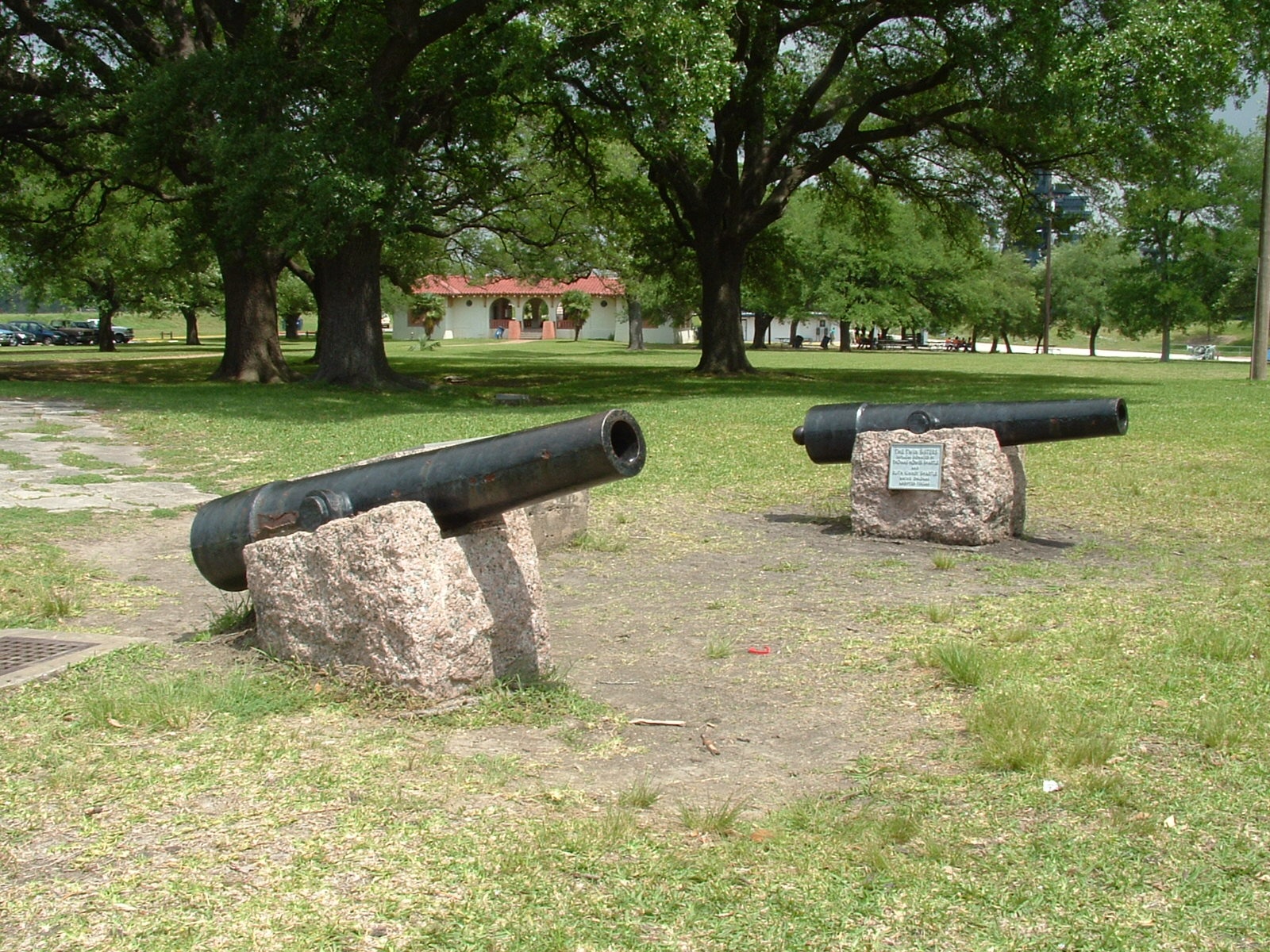As part of the Union blockade of the Texas coast, Commander William B. Renshaw led his squadron of eight ships into Galveston harbor to demand surrender of the most important Texas port on October 4, 1862. Brig. Gen. Paul O. Hébert, commanding the Confederate District of Texas, had removed most of the heavy artillery from Galveston Island, which he believed to be indefensible.
The Battle
The Fort Point garrison fired on the federal ships, which responded by dismounting the Confederate cannon with return shots. Col. Joseph J. Cook, in command on the island, arranged a four-day truce while he evacuated his men to the mainland. The Union ships held the harbor, but 264 men of the Forty-second Massachusetts Infantry, led by Col. I. S. Burrell, did not arrive until December 25 to occupy Kuhn's Wharf and patrol the town.
 The destruction of U.S.S. Westfield was the final act of the Battle of Galveston, January 1, 1863.
The destruction of U.S.S. Westfield was the final act of the Battle of Galveston, January 1, 1863.
Magruder gathered infantry and cavalry, led by Brig. Gen. William R. Scurry, and supported by twenty light and heavy cannons, to cross the railroad bridge onto the island to capture the federal forces ashore. To meet the attack Renshaw had six ships that mounted twenty-nine pieces of heavy artillery.
The Confederates entered Galveston on New Year's night, January 1, 1863, and opened fire before dawn. Cook failed to seize the wharf because of the short ladders provided for his men. Naval guns helped drive back the assault. Then the Confederate "cottonclads" struck from the rear of the Union squadron.
The Harriet Lane sank the Neptune when it tried to ram the Union ship, but men from the Bayou City boarded and seized the federal vessel despite the explosion of their own heavy cannon. Renshaw's flagship, the Westfield, ran aground, and the commander died trying to blow up his ship rather than surrender it. The other Union ships sailed out to sea, ignoring Confederate surrender demands, which could be enforced only upon the abandoned federal infantry in town.
The Aftermath
Magruder had retaken Galveston with a loss of twenty-six killed and 117 wounded. Union losses included the captured infantry and the Harriet Lane, about 150 casualties on the naval ships, as well as the destruction of the Westfield. The port remained under Confederate control for the rest of the war.
The Union blockade around the city of Galveston was lifted temporarily for four days, and Galveston remained the only major port that remained in Confederate hands at the end of the war. The Confederate Congress stated this on the successful recapture of Galveston: The bold, intrepid, and gallant conduct of Maj. Gen. J. Bankhead Magruder, Col. Thomas Green, Maj. Leon Smith and other officers, and of the Texan Rangers and soldiers engaged in the attack on, and victory achieved over, the land and naval forces of the enemy at Galveston, on the 1st of January, 1863, eminently entitle them to the thanks of Congress and the country... This brilliant achievement, resulting, under the providence of God, in the capture of the war steamer Harriet Lane and the defeat and ignominious flight of the hostile fleet from the harbor, the recapture of the city and the raising of the blockade of the port of Galveston, signally evinces that superior force may be overcome by skillful conception and daring courage.
 Replicas of the "Twin Sisters", which were used in the 1836 Battle of San Jacinto and the 1863 Battle of Galveston.
Replicas of the "Twin Sisters", which were used in the 1836 Battle of San Jacinto and the 1863 Battle of Galveston.